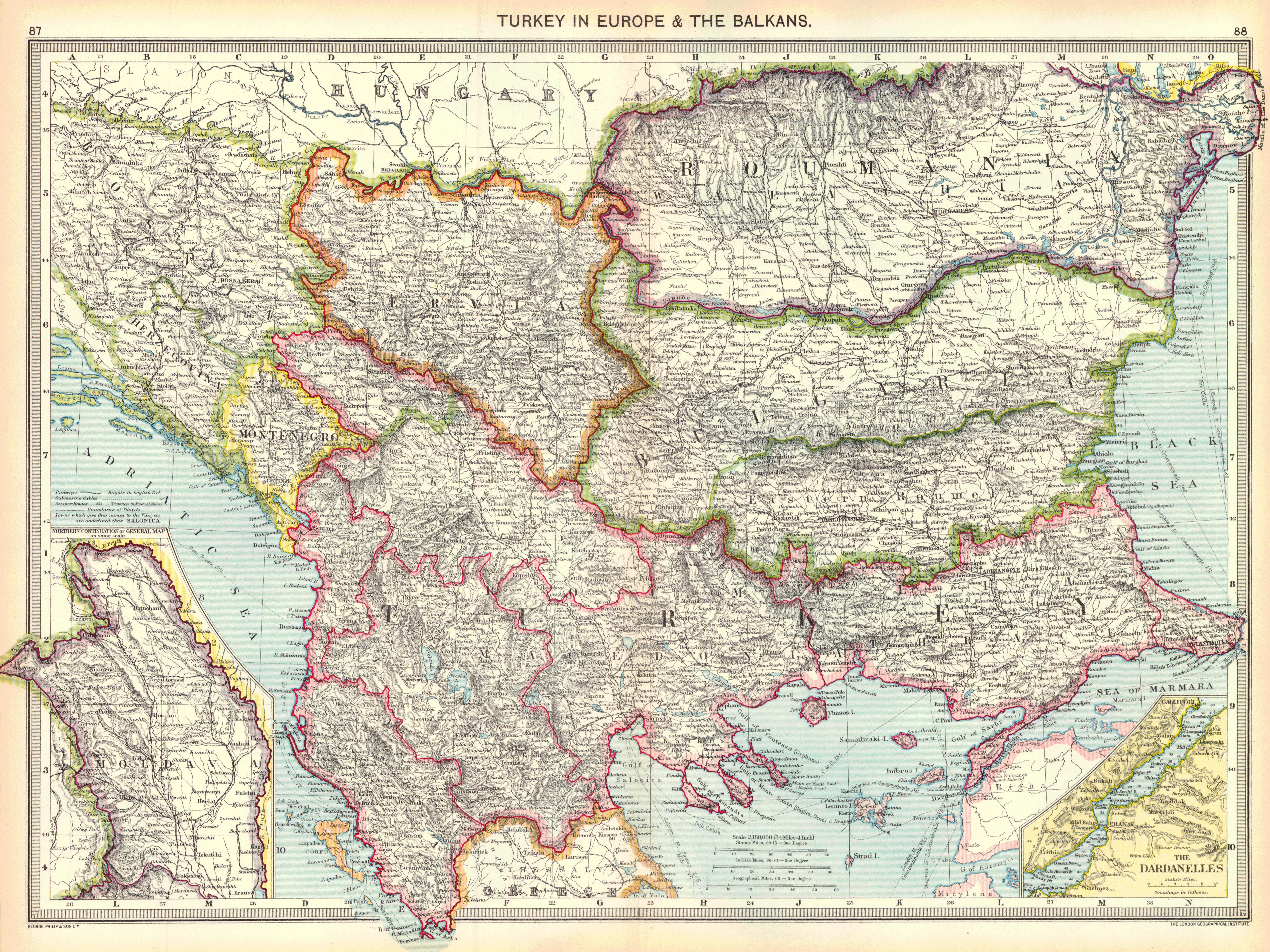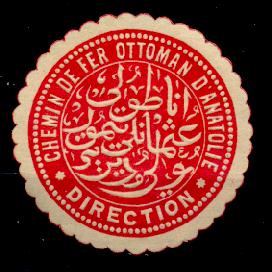|
Haydarpaşa Railway Station
Haydarpaşa station ( tr, Haydarpaşa Garı) is a railway station in Istanbul, that was, until 2012 the main city terminal for trains travelling to and from the Anatolian side of Turkey. It used to be Turkey's busiest railway station. (Its counterpart on the European side of the city was Sirkeci station which served train services to and from the Thracian side of the country.) The station building still houses the headquarters for District 1 of the State Railways but since a fire in 2010 the station has not been in use and its future remains uncertain. Haydarpaşa stands on an embankment over the Bosphorus just south of the Port of Haydarpaşa (one of the main container terminals in Turkey) and is slightly north of busy Kadıköy. Until the rail service was suspended, ferry services connected it to Eminönü, Karaköy and Kadıköy. The closure of the station has been very controversial and a group known as the Haydarpaşa Solidarity Group ( tr, Haydarpaşa Dayanışması) has ... [...More Info...] [...Related Items...] OR: [Wikipedia] [Google] [Baidu] |
Kadıköy
Kadıköy (), known in classical antiquity and during the Roman and Byzantine eras as Chalcedon ( gr, Χαλκηδών), is a large, populous, and cosmopolitan district in the Asian side of Istanbul, Turkey, on the northern shore of the Sea of Marmara. It partially faces the historic city centre of Fatih on the European side of the Bosporus. One of the expensive neighborhood in Istanbul. Kadıköy is also the name of the most prominent neighbourhood of the district, a residential and commercial area that, with its numerous bars, cinemas and bookshops, is the liberal cultural centre of the Anatolian side of Istanbul. Kadıköy became a district in 1928 when it was separated from Üsküdar district. The neighbourhoods of İçerenköy, Bostancı and Suadiye were also separated from the district of Kartal in the same year, and eventually joined the newly formed district of Kadıköy. Its neighbouring districts are Üsküdar to the northwest, Ataşehir to the northeast, Maltepe ... [...More Info...] [...Related Items...] OR: [Wikipedia] [Google] [Baidu] |
Haydarpaşa
Haydarpaşa is a neighborhood within the Kadıköy and Üsküdar districts on the Asian part of Istanbul, Turkey. Haydarpaşa is named after Ottoman Vizier Haydar Pasha. The place, on the coast of Sea of Marmara, borders to Harem in the northwest and Kadıköy in the southeast. It is a historical area with almost solely public buildings. Haydarpaşa is administered by the Mukhtars of Rasımpaşa and Osmanağa parishes ( tr, Mahallesi Muhtarı). Internationally known structures around the area are the Haydarpaşa Terminal, Port of Haydarpaşa and the Selimiye Barracks in adjacent Harem. Notable buildings Following public structures, built in the 19th century or early 20th century during the Ottoman era, are found in Haydarpaşa: Health and education * Haydarpaşa Numune Hastanesi (Haydarpaşa Paragon Hospital) * GATA Haydarpaşa Eğitim Hastanesi (Haydarpaşa Hospital of Gülhane Military Medical Academy) * Dr Siyami Ersek Hospital — A renowned hospital for cardiology * ... [...More Info...] [...Related Items...] OR: [Wikipedia] [Google] [Baidu] |
Bosporus Germans
Bosporus Germans are those ethnic Germans living and settled in Istanbul since the second half of the 19th century. Nineteenth century The first generation came a few decades before and (especially) during the three political visits of Kaiser Wilhelm II to Constantinople (Istanbul), the capital city of the Ottoman Empire (on 21 October 1889, and on 5 October 1898, as the guest of Sultan Abdülhamid II; and on 15 October 1917, as the guest of Sultan Mehmed V). The Taksim German Hospital was founded by three nurses and opened in 1852. Most of the initial German settlers in Istanbul were craftsmen, industrialists and soldiers. Baron Colmar Freiherr von der Goltz, also known as ''Goltz Pasha'', who was the chief advisor of the Ottoman Army from 1883 to 1896; and General Otto Liman von Sanders, who was a successful commander of the Ottoman Army during World War I, may be the most famous of them in the military field. Some of the most beautiful Bosporus villas, such as the Krupp and ... [...More Info...] [...Related Items...] OR: [Wikipedia] [Google] [Baidu] |
Mehmed V
Mehmed V Reşâd ( ota, محمد خامس, Meḥmed-i ḫâmis; tr, V. Mehmed or ; 2 November 1844 – 3 July 1918) reigned as the 35th and penultimate Ottoman Sultan (). He was the son of Sultan Abdulmejid I. He succeeded his half-brother Abdul Hamid II after the 31 March Incident. He was succeeded by his half-brother Mehmed VI. His nine-year reign was marked by the cession of the Empire's North African territories and the Dodecanese Islands, including Rhodes, in the Italo-Turkish War, the traumatic loss of almost all of the Empire's European territories west of Constantinople (now Istanbul) in the First Balkan War, and the entry of the Ottoman Empire into World War I in 1914, which would ultimately lead to the Empire's end. Early life Mehmed V was born on 2 November 1844 at the Çırağan Palace, Istanbul.''The Encyclopædia Britannica'', Vol.7, edited Hugh Chisholm, (1911), 3; "''Constantinople, the capital of the Turkish Empire..''". His father was Sultan Abdulmejid I, ... [...More Info...] [...Related Items...] OR: [Wikipedia] [Google] [Baidu] |
Stonemason
Stonemasonry or stonecraft is the creation of buildings, structures, and sculpture using stone as the primary material. It is one of the oldest activities and professions in human history. Many of the long-lasting, ancient shelters, temples, monuments, artifacts, fortifications, roads, bridges, and entire cities were built of stone. Famous works of stonemasonry include the Egyptian pyramids, the Taj Mahal, Cusco's Incan Wall, Easter Island's statues, Angkor Wat, Borobudur, Tihuanaco, Tenochtitlan, Persepolis, the Parthenon, Stonehenge, the Great Wall of China, and Chartres Cathedral. Definition Masonry is the craft of shaping rough pieces of rock into accurate geometrical shapes, at times simple, but some of considerable complexity, and then arranging the resulting stones, often together with mortar, to form structures. *Quarrymen split sheets of rock, and extract the resulting blocks of stone from the ground. *Sawyers cut these rough blocks into cuboids, to req ... [...More Info...] [...Related Items...] OR: [Wikipedia] [Google] [Baidu] |
Italy
Italy ( it, Italia ), officially the Italian Republic, ) or the Republic of Italy, is a country in Southern Europe. It is located in the middle of the Mediterranean Sea, and its territory largely coincides with the homonymous geographical region. Italy is also considered part of Western Europe, and shares land borders with France, Switzerland, Austria, Slovenia and the enclaved microstates of Vatican City and San Marino. It has a territorial exclave in Switzerland, Campione. Italy covers an area of , with a population of over 60 million. It is the third-most populous member state of the European Union, the sixth-most populous country in Europe, and the tenth-largest country in the continent by land area. Italy's capital and largest city is Rome. Italy was the native place of many civilizations such as the Italic peoples and the Etruscans, while due to its central geographic location in Southern Europe and the Mediterranean, the country has also historicall ... [...More Info...] [...Related Items...] OR: [Wikipedia] [Google] [Baidu] |
Baghdad Railway
Baghdad (; ar, بَغْدَاد , ) is the capital of Iraq and the second-largest city in the Arab world after Cairo. It is located on the Tigris near the ruins of the ancient city of Babylon and the Sassanid Persian capital of Ctesiphon. In 762 CE, Baghdad was chosen as the capital of the Abbasid Caliphate, and became its most notable major development project. Within a short time, the city evolved into a significant cultural, commercial, and intellectual center of the Muslim world. This, in addition to housing several key academic institutions, including the House of Wisdom, as well as a multiethnic and multi-religious environment, garnered it a worldwide reputation as the "Center of Learning". Baghdad was the largest city in the world for much of the Abbasid era during the Islamic Golden Age, peaking at a population of more than a million. The city was largely destroyed at the hands of the Mongol Empire in 1258, resulting in a decline that would linger through man ... [...More Info...] [...Related Items...] OR: [Wikipedia] [Google] [Baidu] |
Ankara
Ankara ( , ; ), historically known as Ancyra and Angora, is the capital of Turkey. Located in the central part of Anatolia, the city has a population of 5.1 million in its urban center and over 5.7 million in Ankara Province, making it Turkey's second-largest city after Istanbul. Serving as the capital of the ancient Celtic state of Galatia (280–64 BC), and later of the Roman province with the same name (25 BC–7th century), the city is very old, with various Hattian, Hittite, Lydian, Phrygian, Galatian, Greek, Persian, Roman, Byzantine, and Ottoman archeological sites. The Ottomans made the city the capital first of the Anatolia Eyalet (1393 – late 15th century) and then the Angora Vilayet (1867–1922). The historical center of Ankara is a rocky hill rising over the left bank of the Ankara River, a tributary of the Sakarya River. The hill remains crowned by the ruins of Ankara Castle. Although few of its outworks have survived, the ... [...More Info...] [...Related Items...] OR: [Wikipedia] [Google] [Baidu] |
Ships
A ship is a large watercraft that travels the world's oceans and other sufficiently deep waterways, carrying cargo or passengers, or in support of specialized missions, such as defense, research, and fishing. Ships are generally distinguished from boats, based on size, shape, load capacity, and purpose. Ships have supported exploration, trade, warfare, migration, colonization, and science. After the 15th century, new crops that had come from and to the Americas via the European seafarers significantly contributed to world population growth. Ship transport is responsible for the largest portion of world commerce. The word ''ship'' has meant, depending on the era and the context, either just a large vessel or specifically a ship-rigged sailing ship with three or more masts, each of which is square-rigged. As of 2016, there were more than 49,000 merchant ships, totaling almost 1.8 billion dead weight tons. Of these 28% were oil tankers, 43% were bulk carriers, and 13% were ... [...More Info...] [...Related Items...] OR: [Wikipedia] [Google] [Baidu] |
Chemins De Fer Ottomans D'Anatolie
The Chemins de Fer Ottomans d'Anatolie ( tr, Osmanlı Anadolu Demiryolları, en, Anatolian Railway), founded on 4 October 1888, was a railway company that operated in the Ottoman Empire.CFOA History - Trains and Railways of Turkey The company was headquartered in . The CFOA was the busiest railway in the Ottoman Empire and was one of the two railways operating into İstanbul, along with the . The (İstanbu ... [...More Info...] [...Related Items...] OR: [Wikipedia] [Google] [Baidu] |

.jpg)




